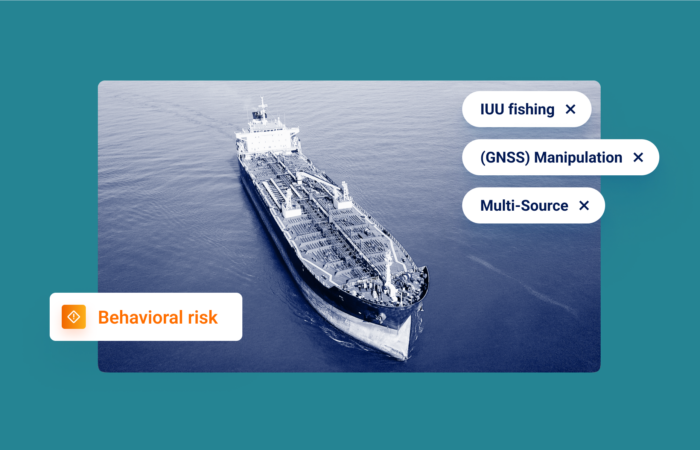What’s inside?
A Telling Combination
Commercial fishing vessels are required to have their automatic identification systems (AIS) operating at all times, due to safety and species regulations. But the lucrative black market for endangered and highly regulated species incentivizes distant-water fleets to follow aquatic animals into foreign exclusive economic zones (EEZs). The only way to enter another country’s EEZ without detection is by disabling the AIS.
Windward’s advanced search engine can quickly detect such deceptive fishing practices by querying for ship-to-ship (STS) meetings and dark activities in areas well known for fishing activities (fishing “hot zones”). The reason we query for both of these behaviors is because this combination often indicates incidents of illegal, unreported and unregulated (IUU) fishing activities. STS meetings are not uncommon, of course, but if they occur after a fishing vessel regains its transmissions following a dark activity period, this sequence is highly indicative of IUU fishing.

Two Recent Incidents
Let’s take a closer look at a fishing vessel sailing under the Chinese flag. It has an extensive history of operating near the EEZs of Argentina and Uruguay. The image below shows the vessel’s path and clearly indicates that the vessel’s crew is well aware of where the Argentinian EEZ begins, as the vessel consistently makes sure to stay just outside of that border (when its AIS is activated).

The most recent activity we were able to detect at the time of publication took place on April 24, 2022. The vessel went dark for 15 hours just 10 nautical miles off the Argentinian EEZ. The uncertain radius of its activity indicates the vessel may have entered the EEZ.

While dark activities are a way for fishing vessels to enter EEZs without being detected, conducting ship-to-ship meetings with supporting vessels is what enables them to operate for long periods of time, far away from their own fishing areas. Support vessels offload the catch and refuel the other vessels, so they can operate year-long, without having to call port, or report their catch to authorities.
The Chinese-flagged vessel has conducted 16 ship-to-ship meetings since December 2021 near the Argentinian EEZ, each time accompanied by supporting vessels flying under the Chinese or Panamanian flag. These meetings allow the ship to operate in the area for six months and counting…
Another example of a vessel engaging in ship-to-ship meetings to facilitate IUU fishing is the Chinese-flagged vessel below that typically operates along the Peruvian and Chilean EEZs. This vessel has maintained a presence in the Peruvian and Chilean fishing areas for ten months, with the help of supporting vessels.

On March 9, this vessel met with a Panama-flagged cargo vessel that changed its reported draft – 7.3 DWT to 9.3 DWT – and its reported ETA to Shidao, China, immediately after meeting with the fishing vessel. Having this cargo vessel transfer the catch load off its deck enabled the fishing vessel to continue its fishing operations without calling port, or reporting the catch.

This vessel was still in the region at the time of publication, continuing its fishing operations in the Pacific, without any reported port calls for the near future.
Entering a country’s EEZ undetected and operating through frequent ship-to-ship meetings with supporting vessels decreases the necessity of port time and obscures jurisdictional scrutiny and oversight of daily ship operations. This works solely in the best interests of the commercial owners of the fishing vessels, and disregards the legal, environmental and human rights issues raised.
It was not difficult to find two examples of IUU incidents in the same period – unfortunately, these incidents only seem to be increasing in number. Maritime AI capabilities are necessary to detect, identify and significantly reduce IUU.


